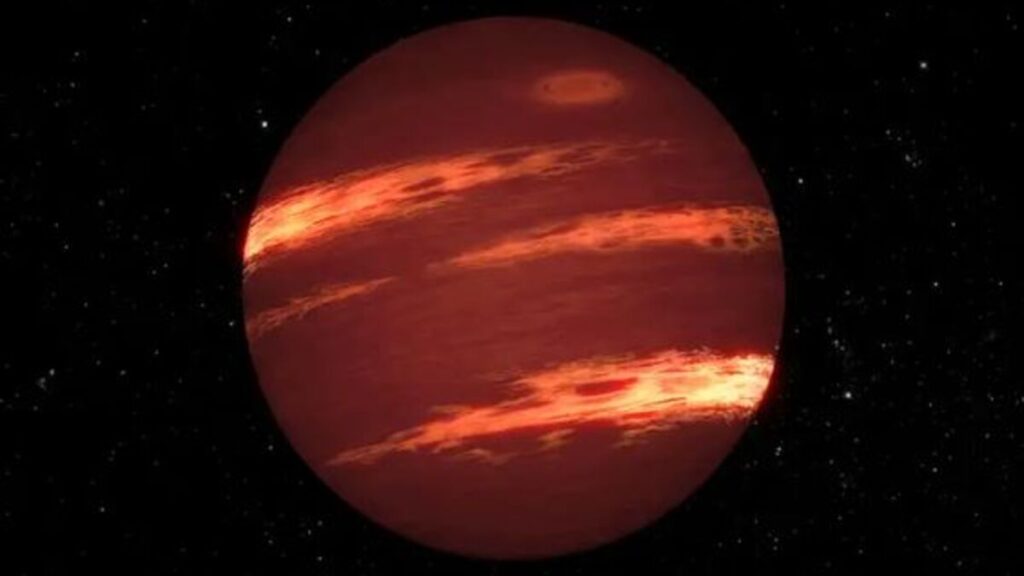
Astronomer Jackie Faherty might have just made the discovery of a lifetime. While she was looking into space using information from the James Webb Space Telescope (JWST), she found something that blew her mind. Brown dwarf W1935 was emitting a methane signature, unlike anything anyone had seen before.
The object, which is larger than Jupiter and about 47 light-years away from Earth, was not behaving like a typical brown dwarf. Typically, brown dwarfs are very mysterious and unusual. While they form like stars, they have some peculiar characteristics that make them unique.
They do not grow big enough to generate their own energy via nuclear fusion in their cores. Therefore, some experts call them “failed stars.” It was not unusual to see methane in the atmospheres of brown dwarfs, but it was quite surprising to find out that the object itself was emitting the methane.
Faherty said that this was the first time scientists had seen such a methane fingerprint on a brown dwarf. “[It] was like a pebble in a shoe. I couldn’t get rid of it. I could only focus on this one feature,” she said while presenting her findings at the 243rd meeting of the American Astronomical Society.
ALSO READ: There’s a Massive Space Rock With Horns Racing Towards Earth: Is It the Big Bang All Over Again?
A graduate student, Austin Rothermich, also said, “For your typical brown dwarf just traversing the galaxy in solitude, your brown dwarf is very mysterious. It does not want to give away any of its secrets.” However, Faherty’s discovery might be the key to unlocking its secrets.
Looking at the emissions, they are pretty similar to those found on Jupiter and Saturn. On these planets, the methane emissions are linked to the aurora. These are the dancing lights that appear when charged particles from the sun interact with the planet’s magnetic fields and atmospheres.
POLL — Is Artificial Intelligence a Net Positive or Negative for Mankind?
Therefore, W1935 likely hosts aurora too. However, there is a catch. To produce an aurora, the object typically needs a nearby star. From all observations, W1935 does not have a nearby star.
So, what was supplying the high-energy particles to power its aurora? The only plausible explanation the scientist came up with is the presence of an active volcanic moon. For Jupiter and Saturn, they have active moons that eject lava material into space.
This created the methane emissions and the aurora as well. Therefore, this could be what is happening with the brown dwarf, too. Faherty explained this possibility but emphasized that it is only a hypothesis for now.
ALSO READ: The Most Powerful Rocket Ever Built is Going for a Second Test Flight
“That does not mean that we’re declaring that we have found an active moon, but it’s one of the explanations,” Faherty said. The astronomer and her team are also exploring several options to be certain about W1935. An angle they are currently working on is the possibility of free-floating matter in space, called interstellar plasma.
Regardless of their conclusions, Faherty’s finding is groundbreaking and could open the door for a lot of research. She recognized this and emphasized how important the telescope was to her conclusions. “I don’t think I emphasized this enough. These are so stinking faint. So faint. JWST was an absolute requirement to measure this,” Faherty said.
You Might Also Like:
Guinness World Records Reviews World Oldest Dog Title Holder, Bobi, Amid Vets’ Skepticism
Judge Strikes Down Requests to Dismiss Case Against Veteran Charged in Subway Chokehold Death
Wall Street Billionaires to Host Fundraiser For Nikki Haley’s Presidential Campaign Amid Controversy
Prosecutors Reveal Hunter Biden’s Gun Pouch Had Cocaine Residue in Court Filing
Texas Senator Condemns Plan to Give Poor Residents $500, Says It’s Unconstitutional
